ড. সামিয়া হক জন্মগ্রহণ করেছেন নাইজেরিয়ায় এবং শৈশব ও কৈশোর সেখানে কাটিয়েছেন। ১৯৮৯ সালে দেশে ফিরে রেডিয়েন্ট স্কুল থেকে ও-লেভেল সম্পন্ন করেন এবং পরবর্তীতে উচ্চমাধ্যমিক শিক্ষা শেষ করেন। ২০০১ সালে বুয়েট থেকে কেমিক্যাল ইঞ্জিনিয়ারিংয়ে স্নাতক ডিগ্রি লাভ করেন। এরপর ২০০৪ সালে টরন্টো বিশ্ববিদ্যালয়, কানাডা থেকে কেমি ও পরিবেশ প্রকৌশলে মাস্টার্স এবং ২০১০ সালে ড্রেক্সেল বিশ্ববিদ্যালয়, যুক্তরাষ্ট্র থেকে পরিবেশ প্রকৌশলে পিএইচডি অর্জন করেন।
ড. হক উত্তর ক্যারোলিনা অঙ্গরাজ্যের এনভায়রনমেন্টাল প্রটেকশন এজেন্সিতে (EPA) পোস্টডক্টরাল ট্রেনিং সম্পন্ন করেন। বর্তমানে তিনি দক্ষিণ ক্যারোলিনা বিশ্ববিদ্যালয়ের পুরঃ ও পরিবেশ প্রকৌশল বিভাগে সহকারী অধ্যাপক হিসেবে কর্মরত। তাঁর গবেষণার বিষয়বস্তু প্রধানত বায়ু দূষণ, আভ্যন্তরীণ বায়ুর গুণমান, মানব-ভবন ইন্টারঅ্যাকশন, কন্টামিনেন্ট ট্রান্সপোর্ট এবং ইনডোর হেলথি এনভায়রনমেন্ট। তাঁর কাজ মূলত স্বাস্থ্যকর ইনডোর পরিবেশ নিশ্চিত করতে এবং অগ্রাধুনিক predictive মডেল তৈরি করতে নিবদ্ধ।
💬 প্রশ্নোত্তর পর্ব:
প্রশ্ন: বিজ্ঞানী.অর্গ এর পক্ষ থেকে স্বাগত জানাচ্ছি। প্রথমে আপনার সম্পর্কে কিছু বলুন।
উত্তর: ধন্যবাদ। আমার শৈশব ও কৈশোর নাইজেরিয়ায় কেটেছে। দেশে ফিরে ১৯৮৯ সালে রেডিয়েন্ট স্কুল থেকে O-level এবং উচ্চমাধ্যমিক শেষ করি। ২০০১ সালে বুয়েট থেকে কেমিক্যাল ইঞ্জিনিয়ারিংয়ে স্নাতক ডিগ্রি লাভ করি। এরপর কানাডার টরন্টো বিশ্ববিদ্যালয় থেকে কেমি ও পরিবেশ প্রকৌশলে মাস্টার্স এবং ড্রেক্সেল বিশ্ববিদ্যালয়, যুক্তরাষ্ট্র থেকে পরিবেশ প্রকৌশলে পিএইচডি করি। ড. হক পোস্টডক্টরাল ট্রেনিং করেন EPA, নর্থ ক্যারোলিনায়। বর্তমানে আমি দক্ষিণ ক্যারোলিনা বিশ্ববিদ্যালয়ে সহকারী অধ্যাপক। আমার গবেষণা বায়ু দূষণ, আভ্যন্তরীণ বায়ুর গুণমান এবং ইনডোর স্বাস্থ্যকর পরিবেশ নিয়ে।
প্রশ্ন: আপনার সফলতার পেছনে কারা ভূমিকা রেখেছেন?
উত্তর: আমি এখনো পুরোপুরি সফল কিনা বলতে পারি না। তবে আমার মা, বাবা, ভাই এবং জীবনের সঙ্গী বিশেষভাবে পাশে থেকেছেন। অনুপ্রেরণা হিসেবে আমাকে প্রেরণা দেয় ভবিষ্যৎ প্রজন্ম। আমাদের দায়িত্ব তাদের জন্য দূষণমুক্ত পরিবেশ নিশ্চিত করা।
প্রশ্ন: কেন বৈজ্ঞানিক ও শিক্ষকতা পেশা বেছে নিলেন?
উত্তর: স্কুলে থাকতে “বিজ্ঞান মেলা”তে অংশগ্রহণ এবং নানা প্রশ্ন করা আমার আগ্রহ তৈরি করেছিল। শিক্ষকতার অভ্যাস ছোট ভাইকে পড়ানো থেকে শুরু হয়ে প্রাইভেট টিউটরিং ও কোচিং সেন্টারে উন্নীত হয়। যুক্তরাষ্ট্রের গবেষণা বিশ্ববিদ্যালয়গুলোতে শিক্ষকতা ও গবেষণার সমমানের সুযোগ রয়েছে।
প্রশ্ন: একজন বাঙালী নারী হিসেবে এতদূর আসার পর সাধারণ মেয়েদের জন্য আপনার পরামর্শ কি?
উত্তর: আমি বিশেষভাবে উপদেশ দিচ্ছি না। বহু বাঙালী নারী ইতিমধ্যেই যুক্তরাষ্ট্রের বিশ্ববিদ্যালয়ে অধ্যাপনায় নিযুক্ত এবং প্রযুক্তি শিল্প ও R&D-এ বড় ভূমিকা রেখেছেন। আমি তাদের দেখানো পথ অনুসরণ করেছি — অধ্যাবসায়, ইচ্ছাশক্তি, নিবেদিত প্রাণ হওয়া এবং ব্যর্থতা গ্রহণের মানসিকতা।
প্রশ্ন: বর্তমানে কি নিয়ে গবেষণা করছেন?
উত্তর: আমাদের গবেষণাগারে ইনডোর এয়ার কোয়ালিটি, মাইক্রোব জীবনচক্র, হিউম্যান-বিল্ডিং ইন্টারঅ্যাকশন, কন্টামিনেন্ট ট্রান্সপোর্ট নিয়ে কাজ চলমান। তত্ত্ব, ল্যাব-স্কেল পরীক্ষা এবং ভবনভিত্তিক উপাত্ত বিশ্লেষণ করে একটি পূর্ণাঙ্গ প্রক্রিয়া তৈরি করার চেষ্টা করছি।
প্রশ্ন: nanoparticle diesel fuel নিয়ে কাজ করছেন?
উত্তর: NOx ও VOC নির্গমন নিয়ে গবেষণা করছি। লক্ষ্য হচ্ছে গাড়ি থেকে নির্গত এই পদার্থের পার্শ্বপ্রতিক্রিয়া নিরূপণ। জ্বালানি তেলের মান নিয়ন্ত্রণ রয়েছে, তবে বিশ্বজুড়ে গাড়ির সংখ্যা বৃদ্ধির কারণে নির্গমন বৃদ্ধি পাচ্ছে। আমরা নির্গমন কমানোর এবং তার প্রভাব নিরূপণ করার চেষ্টা করছি।
প্রশ্ন: Computational Fluid Dynamics (CFD) প্রযুক্তি সমন্ধে বলুন।
উত্তর: CFD আংশিক ডিফারেনশিয়াল সমীকরণ সমাধান করে ফ্লুইড প্রবাহ এবং পরিবেশগত পরিবহণ মডেলিং করে। কম্পিউটার ও হাই-পারফরম্যান্স কম্পিউটিং সিমুলেশনকে সহজ ও কার্যকর করেছে।
প্রশ্ন: শিক্ষকতা কেমন লাগছে? সবচেয়ে চ্যালেঞ্জিং কি মনে করেন?
উত্তর: ভালো লাগছে। চ্যালেঞ্জ হচ্ছে বিভিন্ন পটভূমির ছাত্রছাত্রীদের একইভাবে পরিবেশ প্রকৌশল ও পরিবেশ নিয়ে চিন্তা করতে অনুপ্রাণিত করা। ছাত্রদের শেখার ক্ষমতা ও তাদের জ্ঞান কতটুকু হওয়া উচিত তা বোঝানো কঠিন।
প্রশ্ন: ভবিষ্যতে কি বিষয়ে কাজ করতে চান?
উত্তর: পরিবেশের জন্য তৈরি হওয়া নতুন সমস্যা সমাধানে predictive capability ব্যবহার করে দ্রুত সমাধানের পথ নির্দেশ করতে চাই।
প্রশ্ন: তরুণ শিক্ষার্থীদের জন্য আপনার বক্তব্য কি?
উত্তর: মৌলিক জ্ঞান শক্ত রাখা খুব জরুরি। পদার্থ, রসায়ন ও গণিতের ভিত্তি ভালো না হলে নতুন আবিষ্কার সম্ভব নয়। নতুন বিষয় শেখার ও প্রয়োগের আগ্রহ থাকতে হবে। অনুসন্ধিৎসু মন থাকতে হবে, কারণ সঠিক প্রশ্নের মাধ্যমে নতুন বৈজ্ঞানিক আবিষ্কার হয়।
ড. সামিয়া হকের গবেষণা ইনডোর এয়ার কোয়ালিটি, কম্পিউটেশনাল সিমুলেশন এবং পরিবেশ প্রকৌশলে গুরুত্বপূর্ণ অবদান রেখেছে। তাঁর কাজ দেখায় কিভাবে আন্তঃবিষয়ক গবেষণা বাস্তব জীবনের সমস্যার সমাধান করতে পারে।
বিজ্ঞানী অর্গ টিম ড. হকের এই উৎসর্গ ও গবেষণার জন্য অভিনন্দন জানাচ্ছে এবং আশা করছে তাঁর কাজ বাংলাদেশের তরুণ বিজ্ঞানীদের অনুপ্রেরণা দেবে।
Exploring Environmental Engineering hallenges Dr. Samia Haque Speaks
Dr. Samia Haque was born in Nigeria, where she spent her early childhood due to her father’s work. After returning to Bangladesh in 1989, she completed her O-level at Radiant School and higher secondary education locally. She earned her bachelor’s degree in Chemical Engineering from BUET in 2001. She then pursued a master’s in Chemical and Environmental Engineering from the University of Toronto, Canada in 2004 and a PhD in Environmental Engineering from Drexel University, USA in 2010.
After completing her doctoral studies, Dr. Haque undertook postdoctoral training at the Environmental Protection Agency (EPA) in North Carolina, USA. She is currently an Assistant Professor in the Department of Civil and Environmental Engineering at the University of South Carolina. Her research focuses on air pollution, airborne disease transmission, indoor healthy environments, contaminant transport, human-building interaction, and related predictive modeling. Her work addresses previously overlooked aspects of air quality and aims to contribute toward healthier indoor environments.
💬 Interview Section:
Question: Welcome from biggani.org. Thank you for joining us. Could you tell us a little about yourself?
Answer: Thank you. My early childhood and adolescence were spent in Nigeria due to my father’s work, where I was also born. After returning to Bangladesh in 1989, I completed O-levels at Radiant School and higher secondary education. I earned my bachelor’s degree in Chemical Engineering from BUET in 2001, followed by a master’s in Chemical and Environmental Engineering at the University of Toronto in 2004. I completed my PhD in Environmental Engineering at Drexel University, USA in 2010. After my PhD, I did postdoctoral training at the EPA in North Carolina. Currently, I serve as an Assistant Professor in Civil and Environmental Engineering at the University of South Carolina. My research focuses on air pollution, airborne disease transmission, and indoor healthy environments — areas which have often been overlooked compared to water pollution.
Question: Who has played a significant role in your success?
Answer: I am not sure I am fully successful yet, but my family — especially my mother and life partner — have played a key role by encouraging me and supporting me along the way. In terms of inspiration, I am motivated by the future generation. It is our duty to ensure they inherit a pollution-free environment.
Question: Why did you choose science and teaching as your profession?
Answer: I was interested in this field from a young age. My parents told me that I frequently participated in school science fairs and asked many “why” questions. Teaching has always been a part of my life — first tutoring my younger brother, then private tutoring and coaching centers. Working at research-intensive universities in the U.S. allows me to focus equally on teaching and research.
Question: As a Bangladeshi woman, you have achieved remarkable success. What advice do you have for women pursuing similar careers?
Answer: I wouldn’t call it advice, but many Bangladeshi women have already succeeded in U.S. universities as faculty or in technology and R&D. I have followed their path — with persistence, determination, dedication, and understanding that failure is part of success. One should not give up after a single failure.
Question: What are you currently researching?
Answer: My lab studies indoor air quality, microbial life cycles in buildings, human-building interaction, and contaminant transport. We combine theoretical work, lab-scale experiments, and building-specific data to develop processes that give a comprehensive understanding of indoor air quality.
Question: What work are you doing with nanoparticle diesel fuel?
Answer: We are studying NOx and Volatile Organic Compound (VOC) emissions from diesel fuel. Our goal is to understand the side effects these emissions have on the surrounding environment. Global vehicle numbers are rising, so emissions and pollution remain major concerns. Our research examines how emission-based pollution can be mitigated and its potential impact on the environment.
Question: Could you explain Computational Fluid Dynamics (CFD) technology?
Answer: CFD is a theoretical framework that solves partial differential equations (PDEs) numerically using computers, as most PDEs do not have analytical solutions. It allows simulation of fluid flow and contaminant transport in a virtual environment. High-performance computing has made these simulations faster and more practical, which previously required extensive time and effort.
Question: How do you find teaching? What is most challenging?
Answer: I enjoy teaching. The challenge is inspiring students with diverse backgrounds to think critically about environmental engineering and understanding how much knowledge they should acquire. Guiding them to realize what they know and what they need to learn requires careful effort and patience.
Question: What would you like to focus on in the future?
Answer: We continue to generate environmental problems intentionally or unintentionally. I hope to contribute predictive capabilities that can guide solutions to emerging environmental challenges before they become critical.
Question: What advice would you give to young students who want to pursue science?
Answer: A strong foundation in fundamentals is essential. Modern interdisciplinary research often requires a solid understanding of physics, chemistry, and mathematics. Students should maintain curiosity and a willingness to learn and apply new concepts. For example, in civil and environmental engineering, understanding biology can be crucial for bio-chemical studies. Asking the right questions is vital because new scientific discoveries often stem from precise inquiries.
Dr. Samia Haque’s work in indoor air quality, computational simulations, and environmental engineering contributes significantly to healthier living environments. Her research demonstrates how interdisciplinary approaches can solve real-world environmental challenges.
The biggani.org team congratulates Dr. Haque on her dedication and hopes her work inspires young Bangladeshi scientists to pursue research and innovation.

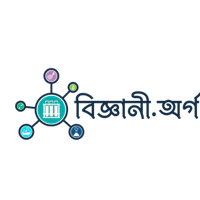
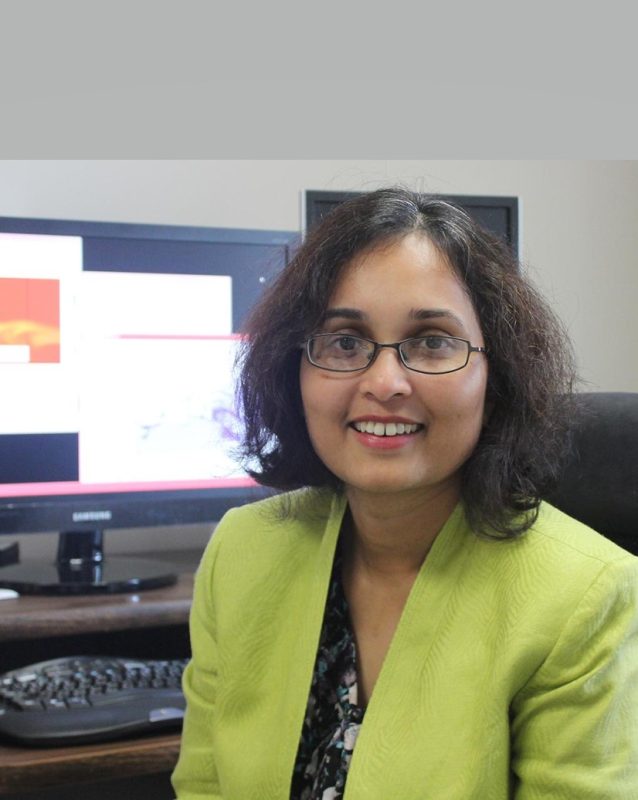




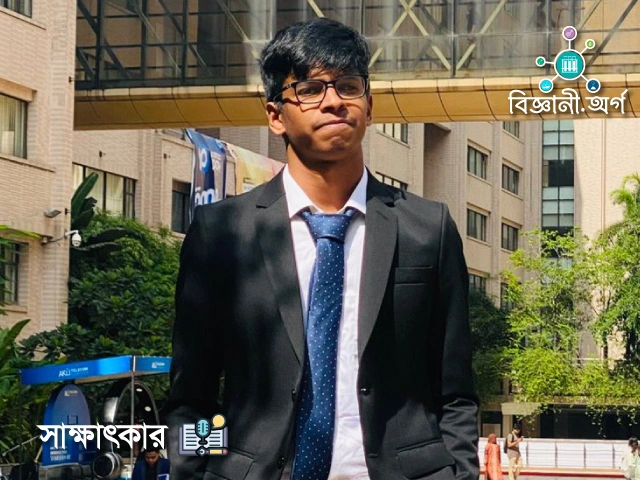
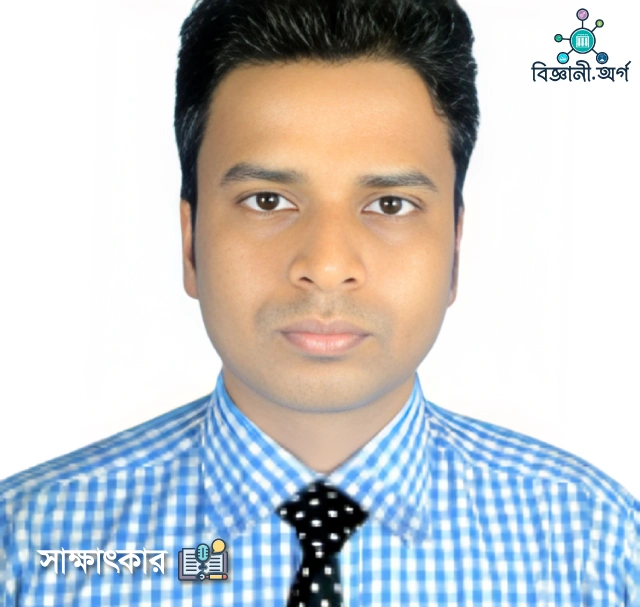
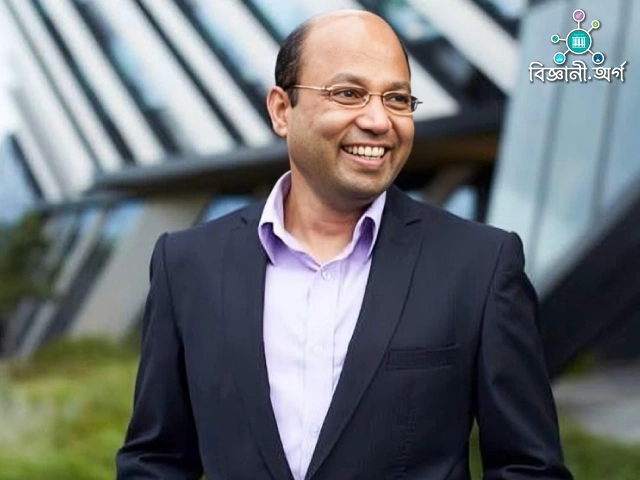
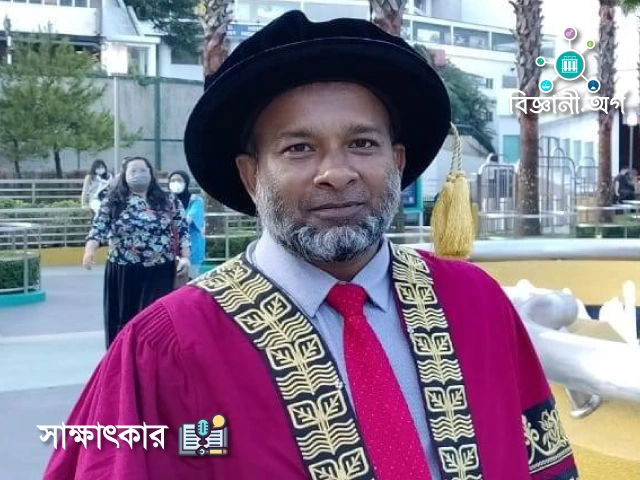
Leave a comment